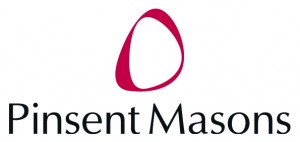Implementing a process improvement approach without interrogating existing practices and integrating new optimisation could unfortunately lead to more inefficiency.
Eliminating waste, or process steps the customer is not willing to pay for, is at the core of the Lean Six Sigma (LSS methodology). Lean has been around for centuries, but its modern iteration was developed in the 1950s and 60s at Japanese company Toyota. It focuses on improving interconnected processes, ensuring that an item moves through the value-stream without interruption, and defect free.
For example, in a law firm context, this could be removing unnecessary signoffs by senior lawyers. This not only allows the document (ie. ‘the unit’) to move through the process without delay, but also equips the correct staff member that understands the subject matter to correctly verify the details.
‘Six Sigma’ – an American methodology introduced at Motorola in the 1980s – is data-driven in the aim to minimise variation between or defects of a product. In a law firm context this could mean identifying and addressing at the first stage the common defects which appear in standard legal documents. Removing these defects will ensure that customers will receive a consistent, high-quality output. Both philosophies combined create a full toolset of process improvement.
LSS has been applied at the world’s biggest companies – which you could attribute to their success. Since then, some of Asia’s most successful companies and public services have used the process improvement approach. So, what are the challenges for law firms?

“The ‘8 wastes of Lean’ are: transportation, inventory, motion, waiting, over-processing, over-production, defects and skills. But solely identifying issues which could be resolved through LSS, won’t lead to real change unless process improvements are wholescale communicated, adopted and fully integrated into day-to-day best practice.”
Adam Marsland, Head of Lean Six Sigma at Pinsent Masons Vario
Challenges for law firms
Law firms will be familiar with some change management models, paid for at a high premium to suggest changes but fail to free bottlenecks, streamline activities, improve efficiency and open up opportunity. This can result from a lack of effective engagement between the firm and the consultant. Change management which starts and ends with only senior level engagement is a common scenario in the legal sector – an industry traditionally slow to realise the benefit of LSS. Meaning the whole process improvement, ironically, ends up creating more waste.
As we teeter on the end of a global recession, some law firm departments could face slowdowns in projects, or client demands to do more with less. Law firms will be reviewing how they can simplify standard procedures, minimise costs and release bottlenecks which cost time and resource, especially at an economically vulnerable time and where the client does not benefit.
The ‘8 wastes of Lean’ are: transportation, inventory, motion, waiting, over-processing, over-production, defects and skills. But solely identifying issues which could be resolved through LSS, won’t lead to real change unless process improvements are wholescale communicated, adopted and fully integrated into day-to-day best practice.
“Acknowledging that optimisation hinges on employees changing their processes in line with LSS methodologies is integral. Each member of a department must understand their value to the client – from personal assistants to paralegals to junior lawyers and partners. Training and other group sessions where you encourage feedback, collaboration and ideas with LSS consultants will improve engagement and reiterate its importance“.
Adam Marsland, Head of Lean Six Sigma at Pinsent Masons Vario
How to maximise return applying LSS
It is positive when the solutions are identified and plans have been formulated, but the real challenge is ensuring your employees engage, understand and practice your revised processes.
It’s rare for companies to fully realise optimal business performance from LSS, when they have not involved and supported employees through the five phases – Define, Measure, Analyse, Improve and Control (DMAIC). Without employee engagement across each process, defects will arise as employees return to more familiar and comfortable routines. People can be scared of change. Therefore a behaviour-change gap can form when they aren’t reassured and made aware of their value.
Acknowledging that optimisation hinges on employees changing their processes in line with LSS methodologies is integral. Each member of a department must understand their value to the client – from personal assistants to paralegals to junior lawyers and partners. Training and other group sessions where you encourage feedback, collaboration and ideas with LSS consultants will improve engagement and reiterate its importance. Solutions are more likely to be adopted for the long-term when employees are part of value stream mapping – so they can understand the change in process has resulted from their readings on shortfalls or frustrations they’ve experienced.
These behaviours should be role modelled from the firm’s leadership, which then permutates through all layers of an organisation. Through feedback loops and the monitoring of proposed ideas, leadership can understand the cultural adoption of LSS, and monitor the benefits through hard savings and softer client feedback. Once a firm has a purposeful shift to adopt a LSS mindset, the results can be staggering.




